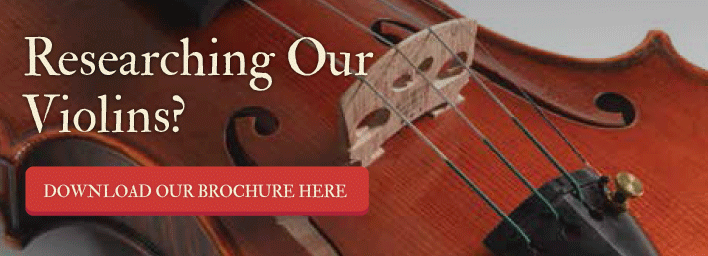5 Breathing Exercises For Violinists

They say that breathing is involuntary, but musicians would beg to differ. You only have to experience a particularly difficult passage or that hard-won solo, not to mention stage-fright, to know breathing doesn't come as involuntarily as you'd expect.
Breathing is essential, though, to calming nerves, maintaining focus, and relieving muscular tension that leads to soreness or even injury. Your rhythmic breaths are also essential for providing the energy and stamina required for long rehearsal weeks and performances.
Emphasizing Healthy Breathing While Playing
Violinists, as well as other string instrument players, benefit from these natural methods that encourage your body to maintain the continuous, rhythmic breathing that's essential to healthy musicianship.
1. Breathe naturally
If you're consciously aware you hold your breath while playing, the first goal is to reverse that habit. Rather than making a concentrated effort at breathing, or working on specific exercises, heed the theories of famous "breathing expert" Frederick Matthias Alexander. His breath work methods – which evolved into physical movements (the Alexander Technique) - were very simple.
Alexander believed the best breathing technique was the one the body adopted with minimal interference. In other words, maintaining your body's natural breathing pace, depth and rhythm is best. This idea creates a nice foundation for the breath work and/or exercises described below.
The next time you practice your scales or a memorized piece, place your attention on your breathing as you play, and allow yourself to relax into a natural breathing pace. The more you do this during practice time, the easier it will be to refocus breathing when/if you notice you're breaths are short, shallow or being held altogether.
2. Bring breath-based exercises into your non-playing life
Playing the violin is a holistically physical experience, one that engages the entire body, as well as your mind and emotions. Keeping your body healthy, in shape, and flexible augments your playing – and certain forms of exercise place greater emphasis on breathing than others do.
Examples of exercises that stress the importance of breathing include yoga, Pilates and Tai Chi. By taking advantage of these exercise forms outside the music room, you'll reap their benefits "off the mat," when your instrument is in hand.
Read, 6 Best Yoga Positions for Violinists, and Pilates for Cellists, for more information on how your exercise routine will benefit you as a musician.
3. Watch yourself in a mirror
Hopefully, your music practice space has a mirror in place, allowing you to visually check your body's alignment and technique as you play. Take a moment to look at yourself and note how you breathe. You can also ask parents, friends, fellow musicians, or your instructor to give you feedback as they watch you play.
- Are you breathing through your nose (ideal) or through your mouth?
- Are you holding your breath for longer-than-normal periods of time? If so, note the cause (concentrating on a difficult passage? is there a particular emotion present? are you nervous?)
- Are intermittent (or frequent) large inhalations or exhalations throwing your healthy playing posture off track?
4. Use musical dynamics as your breathing guide
As you can imagine, the demands on your body in terms of movement and intensity are in direct relationship to the composition's written dynamics. Thus, your muscles require less oxygen to play slower, quieter music and they require more oxygenation for faster and/or louder dynamics.
Let your breathing follow these same guidelines, becoming slower and more relaxed when you need less energy, and becoming deeper and more frequent when the music demands more of you.
Another popular musician's exercise is to hum a piece and see where you take a breath naturally. Mark this with an apostrophe above the music as a "breathing note." Then see if it's comfortable to observe those same breath patterns as you play – adjusting breath marks as needed. Some violinists use vibrato, which has cyclical highs and lows, to help phrase their breaths.
The combination of written music and your body's natural breathing rhythms can work together beautifully.
5. Follow the physics of the bow stroke
The very act of moving the bow across the strings alters your body's position and alignment with the violin. Thus, some performers will work their breaths accordingly. To practice this technique, choose a piece that has longer up- and down-bow passages.
Breathe in as you up-bow, and feel how the act of inhaling causes your rib cage to expand and, in turn, raises your collarbone and shoulder. Then, when meeting a long passage requiring a down-bow, do the opposite; exhale and watch how your contracted lungs pull the rib cage inward, lowering your collarbone and shoulder.
Sometimes the most natural breathing exercises work best, allowing the body to embrace it's natural rhythms – and those inherent in the music – to optimize your playing.


